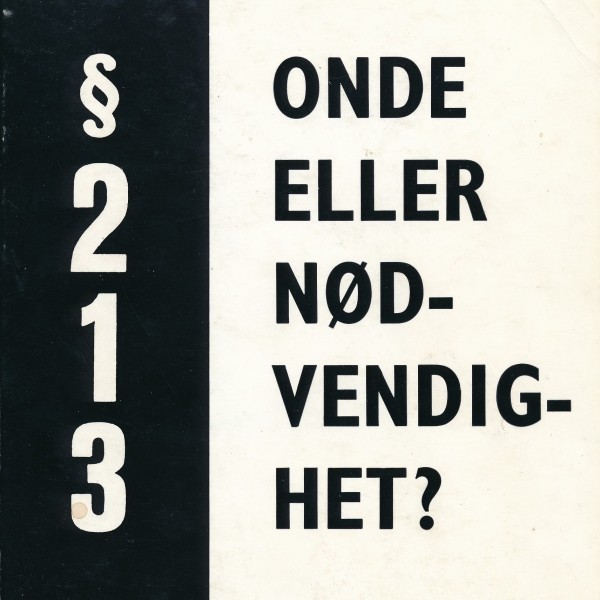§ 213 in the Criminal code

Section 213 in the Norwegian Penal Code of 1902 had the following wording:
If immoral intercourse takes place between persons of the male sex, those who are found guilty, or those who contribute to it, will be sentenced to prison for up to one year.
The same punishment will befall anyone who engages in immoral intercourse with animals, or who contributes to it.
Prosecution will only take place when public interest so demands.
(Quoted from Halsos 2007 p. 93).
In Norway, same-sex relations had been forbidden since the 12th century. Christian V's Norwegian law from 1687 included death penalty for "intercourse which is against nature", including sex between humans and animals. In 1842, the punishment was reduced to penal labour lasting from 6 months to three years.
The initial religious line of reasoning for the prohibition was questioned in the 1700s and 1800s. In some countries, like France (1792), the prosecution of these acts was repealed. This was also the aim of Bernhard Getz, chairman of the commission working to develop a new Norwegian penal code in the late 1800s. However, the other members of the commission and the Parliament did not agree, and the result was Section 213 as cited above.
The third part of the section about "public interests" resulted in the clause only being applied when required by exceptional conditions such as public indignation or seduction of younger people up to 21 years of age.
Between 1905, when the law came into force, and 1950, 119 people were, according to statistics, convicted by Section 213.
From the end of the 19th century the field of psychiatry perceived homosexuality as something innate. At the same time, most psychiatrists believed that many people were born bisexual. If those people were exposed to homosexuality in their adolescence, their sexuality might steer in the wrong direction, which could result in lasting homosexuality. Psychiatrists were especially concerned that adult homosexuals could "seduce" youths to also turn into homosexuals. Based on this "seduction theory", it was suggested twice, in 1925 and 1953, that the prohibition should be replaced with a section that would punish sexuality with persons under 21 and 18 years old (in comparison the age of consent for heterosexual relations was 16 years old).
The suggestions were both rejected by the Parliament and the government, although the actual use of Section 213 coincided to some degree with suggestions' intentions (often men above the age of 21 were convicted for having sex with men below the same age).
Even though Section 213 was rarely used, it had a powerful symbolic value and helped substantiate negative views of same-sex relationships in society. The organisation Det norske forbundet av 1948 therefore fought intensely against the law for a period in the 1950s and then again at the end of the 1960s. When the Parliament finally repealed the section in 1972, it was the first great victory for the Norwegian gay rights movement. This layed the foundation for all the fights to come in achieving acceptance of same-sex sexuality and a larger diversity of gender and sexuality.
In 2022 the 50 year anniversary of the repeal of Section 213 will be marked nationally. Queer cultural year 2022 shall contribute to better documentation and information about Norway's history of diversity of gender and sexuality.
For more information on Section 213, see Martin Skaug Halsos' article from 2007.
References:
Halsos, Martin Skaug. 2007. Norway 1842-1972: When Public Interest Demands. In: Jens Rydström & Kati Mustola (eds.), Criminally Queer. Homosexuality and Criminal Law in Scandinavia 1842-1999. Amsterdam: Aksant, pp. 91-116.
